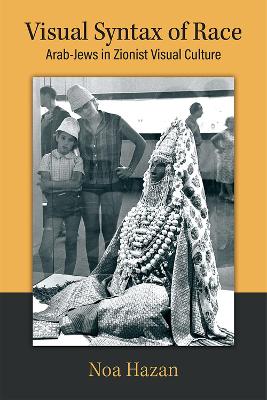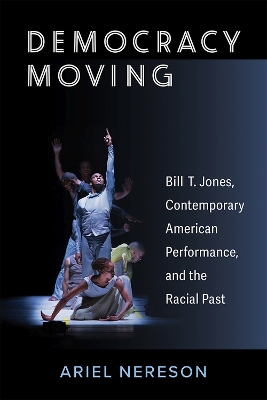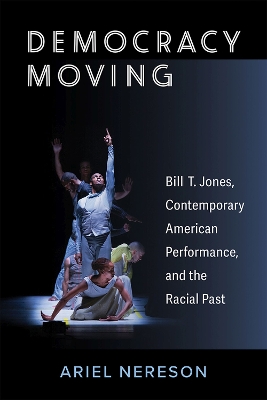Visual Syntax of Race
 -15%
portes grátis
-15%
portes grátis
Visual Syntax of Race
Arab-Jews in Zionist Visual Culture
Hazan, Noa
The University of Michigan Press
09/2022
240
Dura
Inglês
9780472133185
15 a 20 dias
Descrição não disponível.
List of Illustrations by Chapters
Acknowledgments
Preface
Introduction a. Ingathering the Exiles and the Melting Pot Ideals
b. Cultural Racism and Visual Racialization
c. Visual Racialization of the Ingathering of the Exiles and the Melting Pot Ethos c.1 Skin Tone
c.2 Hair Style and Eye Gaze
c.3 Cultural characteristics
c.4 Visual and Textual Massage d. The Chapters Chapter 1: Biologicization of the Jewish Body a. Racial Argument for and Against Emancipation
b. Composite Portraits of Jews b.1 Objectivity
b.2 Standardization
b.3 Generalization c. The Gaze at and of the Jew Chapter 2: Tropes in Transition: From a Culture of Racism to Cultural Racialization a. Racial character of Jews in pre-Zionist Europe a.1 The contradiction between religious and political practices
a.2 Breeding and fertility
a.3 Intellectual abilities
a.4. Professional tendencies b. Shifting terms b.1 The influence of heredity and environment
b.2 Intellectual abilities and mental fortitude
b.3 Professional tendencies and physical abilities
b.4 Spiritual life
b.5 Hygiene and contagious diseases c. Post-Race Discourse c.1 Mizrahim and Racism Without Race
c.2 Reclaiming Race as a Legitimate Category in Cultural Mizrahi Studies
c.3 The Biology of Jews after the Nazi use of Race Theory d. The Visual Syntax of a Nation in the Making d.1 Between the Archetypical and the Unique
d.2 Visual Rhetoric of Ambivalence
d.3 The Catalogue Model in light of Eugenics and Social Darwinism
d.4 From the Image to the Ground: Ruppin and The Yemeni of Kinneret Chapter 3: A Melting Pot or a Dividing Mechanism: Visual Syntax of National Duality a. Great is the Day of the Ingathering of the Exiles: Ingathering While Othering oriental Jewry
b. Twelve Tribes and the Distressing Presence of the Arab in the Jew
c. The Face of Israel at 25: An Inclusive Catalogue
d. What It Means to Be Jewish
e. The 80s and 90s Versions of the Catalogue Model
f. From Unification to Variety and Diversity Conclusions: From Visualizing the Jewish Race to Representing the Israeli Nation Chapter 4: Off-Grain Fabric a. The Establishment of Maskit Fashion House
b. Home-Based Work
c. Crafting Tradition
d. The Display
e. The Objects
f. The context
g. The Audience
h. the Acceptance Chapter 5: The Bride and the Whore a. The Yemen Bride a.1 Recreation
a.2 Salvation
a.3 Displaying b. Fame Fatale Oriental b.1 Black Women's Sexuality on Display
b.2 Two Mizrahi Female Stereotypes and their origins
b.3 The Ethnographic Discourse in Israel c. Conclusions Chapter 6: Institutional Power a. The Elasticity of the Color Line
b. The 1967 war and the 1971 Protest
c. Photographs of Soldiers in the 1967 war c.1 Photographs of Soldiers in the Battlefield
c.2 Soldiers Taking a Break Between Battles
c.3 Soldiers in Victory Photos d. Conclusions Chapter 7: From War to protest-Photographs of Black Panther Demonstrations a. The Black Panthers protest in the Israeli Media a.1 Framing
a.2 Blocking
a.3 Trapping b. Unpublished Photographs
c. Blurring Ethnic Origin
d. Invisibility of the protest as a racial signifier
e. Summary and Conclusions Conclusion
List of references by Chapters
Acknowledgments
Preface
Introduction a. Ingathering the Exiles and the Melting Pot Ideals
b. Cultural Racism and Visual Racialization
c. Visual Racialization of the Ingathering of the Exiles and the Melting Pot Ethos c.1 Skin Tone
c.2 Hair Style and Eye Gaze
c.3 Cultural characteristics
c.4 Visual and Textual Massage d. The Chapters Chapter 1: Biologicization of the Jewish Body a. Racial Argument for and Against Emancipation
b. Composite Portraits of Jews b.1 Objectivity
b.2 Standardization
b.3 Generalization c. The Gaze at and of the Jew Chapter 2: Tropes in Transition: From a Culture of Racism to Cultural Racialization a. Racial character of Jews in pre-Zionist Europe a.1 The contradiction between religious and political practices
a.2 Breeding and fertility
a.3 Intellectual abilities
a.4. Professional tendencies b. Shifting terms b.1 The influence of heredity and environment
b.2 Intellectual abilities and mental fortitude
b.3 Professional tendencies and physical abilities
b.4 Spiritual life
b.5 Hygiene and contagious diseases c. Post-Race Discourse c.1 Mizrahim and Racism Without Race
c.2 Reclaiming Race as a Legitimate Category in Cultural Mizrahi Studies
c.3 The Biology of Jews after the Nazi use of Race Theory d. The Visual Syntax of a Nation in the Making d.1 Between the Archetypical and the Unique
d.2 Visual Rhetoric of Ambivalence
d.3 The Catalogue Model in light of Eugenics and Social Darwinism
d.4 From the Image to the Ground: Ruppin and The Yemeni of Kinneret Chapter 3: A Melting Pot or a Dividing Mechanism: Visual Syntax of National Duality a. Great is the Day of the Ingathering of the Exiles: Ingathering While Othering oriental Jewry
b. Twelve Tribes and the Distressing Presence of the Arab in the Jew
c. The Face of Israel at 25: An Inclusive Catalogue
d. What It Means to Be Jewish
e. The 80s and 90s Versions of the Catalogue Model
f. From Unification to Variety and Diversity Conclusions: From Visualizing the Jewish Race to Representing the Israeli Nation Chapter 4: Off-Grain Fabric a. The Establishment of Maskit Fashion House
b. Home-Based Work
c. Crafting Tradition
d. The Display
e. The Objects
f. The context
g. The Audience
h. the Acceptance Chapter 5: The Bride and the Whore a. The Yemen Bride a.1 Recreation
a.2 Salvation
a.3 Displaying b. Fame Fatale Oriental b.1 Black Women's Sexuality on Display
b.2 Two Mizrahi Female Stereotypes and their origins
b.3 The Ethnographic Discourse in Israel c. Conclusions Chapter 6: Institutional Power a. The Elasticity of the Color Line
b. The 1967 war and the 1971 Protest
c. Photographs of Soldiers in the 1967 war c.1 Photographs of Soldiers in the Battlefield
c.2 Soldiers Taking a Break Between Battles
c.3 Soldiers in Victory Photos d. Conclusions Chapter 7: From War to protest-Photographs of Black Panther Demonstrations a. The Black Panthers protest in the Israeli Media a.1 Framing
a.2 Blocking
a.3 Trapping b. Unpublished Photographs
c. Blurring Ethnic Origin
d. Invisibility of the protest as a racial signifier
e. Summary and Conclusions Conclusion
List of references by Chapters
Este título pertence ao(s) assunto(s) indicados(s). Para ver outros títulos clique no assunto desejado.
Race;Racialization;Racism;Racial marker;Israel;Mizrahim;Ashkenazim;Mizrahi Studies;photography;Museum;Black Panthers;Protest;1967;Visual Culture;Art History;critical race studies;Images
List of Illustrations by Chapters
Acknowledgments
Preface
Introduction a. Ingathering the Exiles and the Melting Pot Ideals
b. Cultural Racism and Visual Racialization
c. Visual Racialization of the Ingathering of the Exiles and the Melting Pot Ethos c.1 Skin Tone
c.2 Hair Style and Eye Gaze
c.3 Cultural characteristics
c.4 Visual and Textual Massage d. The Chapters Chapter 1: Biologicization of the Jewish Body a. Racial Argument for and Against Emancipation
b. Composite Portraits of Jews b.1 Objectivity
b.2 Standardization
b.3 Generalization c. The Gaze at and of the Jew Chapter 2: Tropes in Transition: From a Culture of Racism to Cultural Racialization a. Racial character of Jews in pre-Zionist Europe a.1 The contradiction between religious and political practices
a.2 Breeding and fertility
a.3 Intellectual abilities
a.4. Professional tendencies b. Shifting terms b.1 The influence of heredity and environment
b.2 Intellectual abilities and mental fortitude
b.3 Professional tendencies and physical abilities
b.4 Spiritual life
b.5 Hygiene and contagious diseases c. Post-Race Discourse c.1 Mizrahim and Racism Without Race
c.2 Reclaiming Race as a Legitimate Category in Cultural Mizrahi Studies
c.3 The Biology of Jews after the Nazi use of Race Theory d. The Visual Syntax of a Nation in the Making d.1 Between the Archetypical and the Unique
d.2 Visual Rhetoric of Ambivalence
d.3 The Catalogue Model in light of Eugenics and Social Darwinism
d.4 From the Image to the Ground: Ruppin and The Yemeni of Kinneret Chapter 3: A Melting Pot or a Dividing Mechanism: Visual Syntax of National Duality a. Great is the Day of the Ingathering of the Exiles: Ingathering While Othering oriental Jewry
b. Twelve Tribes and the Distressing Presence of the Arab in the Jew
c. The Face of Israel at 25: An Inclusive Catalogue
d. What It Means to Be Jewish
e. The 80s and 90s Versions of the Catalogue Model
f. From Unification to Variety and Diversity Conclusions: From Visualizing the Jewish Race to Representing the Israeli Nation Chapter 4: Off-Grain Fabric a. The Establishment of Maskit Fashion House
b. Home-Based Work
c. Crafting Tradition
d. The Display
e. The Objects
f. The context
g. The Audience
h. the Acceptance Chapter 5: The Bride and the Whore a. The Yemen Bride a.1 Recreation
a.2 Salvation
a.3 Displaying b. Fame Fatale Oriental b.1 Black Women's Sexuality on Display
b.2 Two Mizrahi Female Stereotypes and their origins
b.3 The Ethnographic Discourse in Israel c. Conclusions Chapter 6: Institutional Power a. The Elasticity of the Color Line
b. The 1967 war and the 1971 Protest
c. Photographs of Soldiers in the 1967 war c.1 Photographs of Soldiers in the Battlefield
c.2 Soldiers Taking a Break Between Battles
c.3 Soldiers in Victory Photos d. Conclusions Chapter 7: From War to protest-Photographs of Black Panther Demonstrations a. The Black Panthers protest in the Israeli Media a.1 Framing
a.2 Blocking
a.3 Trapping b. Unpublished Photographs
c. Blurring Ethnic Origin
d. Invisibility of the protest as a racial signifier
e. Summary and Conclusions Conclusion
List of references by Chapters
Acknowledgments
Preface
Introduction a. Ingathering the Exiles and the Melting Pot Ideals
b. Cultural Racism and Visual Racialization
c. Visual Racialization of the Ingathering of the Exiles and the Melting Pot Ethos c.1 Skin Tone
c.2 Hair Style and Eye Gaze
c.3 Cultural characteristics
c.4 Visual and Textual Massage d. The Chapters Chapter 1: Biologicization of the Jewish Body a. Racial Argument for and Against Emancipation
b. Composite Portraits of Jews b.1 Objectivity
b.2 Standardization
b.3 Generalization c. The Gaze at and of the Jew Chapter 2: Tropes in Transition: From a Culture of Racism to Cultural Racialization a. Racial character of Jews in pre-Zionist Europe a.1 The contradiction between religious and political practices
a.2 Breeding and fertility
a.3 Intellectual abilities
a.4. Professional tendencies b. Shifting terms b.1 The influence of heredity and environment
b.2 Intellectual abilities and mental fortitude
b.3 Professional tendencies and physical abilities
b.4 Spiritual life
b.5 Hygiene and contagious diseases c. Post-Race Discourse c.1 Mizrahim and Racism Without Race
c.2 Reclaiming Race as a Legitimate Category in Cultural Mizrahi Studies
c.3 The Biology of Jews after the Nazi use of Race Theory d. The Visual Syntax of a Nation in the Making d.1 Between the Archetypical and the Unique
d.2 Visual Rhetoric of Ambivalence
d.3 The Catalogue Model in light of Eugenics and Social Darwinism
d.4 From the Image to the Ground: Ruppin and The Yemeni of Kinneret Chapter 3: A Melting Pot or a Dividing Mechanism: Visual Syntax of National Duality a. Great is the Day of the Ingathering of the Exiles: Ingathering While Othering oriental Jewry
b. Twelve Tribes and the Distressing Presence of the Arab in the Jew
c. The Face of Israel at 25: An Inclusive Catalogue
d. What It Means to Be Jewish
e. The 80s and 90s Versions of the Catalogue Model
f. From Unification to Variety and Diversity Conclusions: From Visualizing the Jewish Race to Representing the Israeli Nation Chapter 4: Off-Grain Fabric a. The Establishment of Maskit Fashion House
b. Home-Based Work
c. Crafting Tradition
d. The Display
e. The Objects
f. The context
g. The Audience
h. the Acceptance Chapter 5: The Bride and the Whore a. The Yemen Bride a.1 Recreation
a.2 Salvation
a.3 Displaying b. Fame Fatale Oriental b.1 Black Women's Sexuality on Display
b.2 Two Mizrahi Female Stereotypes and their origins
b.3 The Ethnographic Discourse in Israel c. Conclusions Chapter 6: Institutional Power a. The Elasticity of the Color Line
b. The 1967 war and the 1971 Protest
c. Photographs of Soldiers in the 1967 war c.1 Photographs of Soldiers in the Battlefield
c.2 Soldiers Taking a Break Between Battles
c.3 Soldiers in Victory Photos d. Conclusions Chapter 7: From War to protest-Photographs of Black Panther Demonstrations a. The Black Panthers protest in the Israeli Media a.1 Framing
a.2 Blocking
a.3 Trapping b. Unpublished Photographs
c. Blurring Ethnic Origin
d. Invisibility of the protest as a racial signifier
e. Summary and Conclusions Conclusion
List of references by Chapters
Este título pertence ao(s) assunto(s) indicados(s). Para ver outros títulos clique no assunto desejado.







